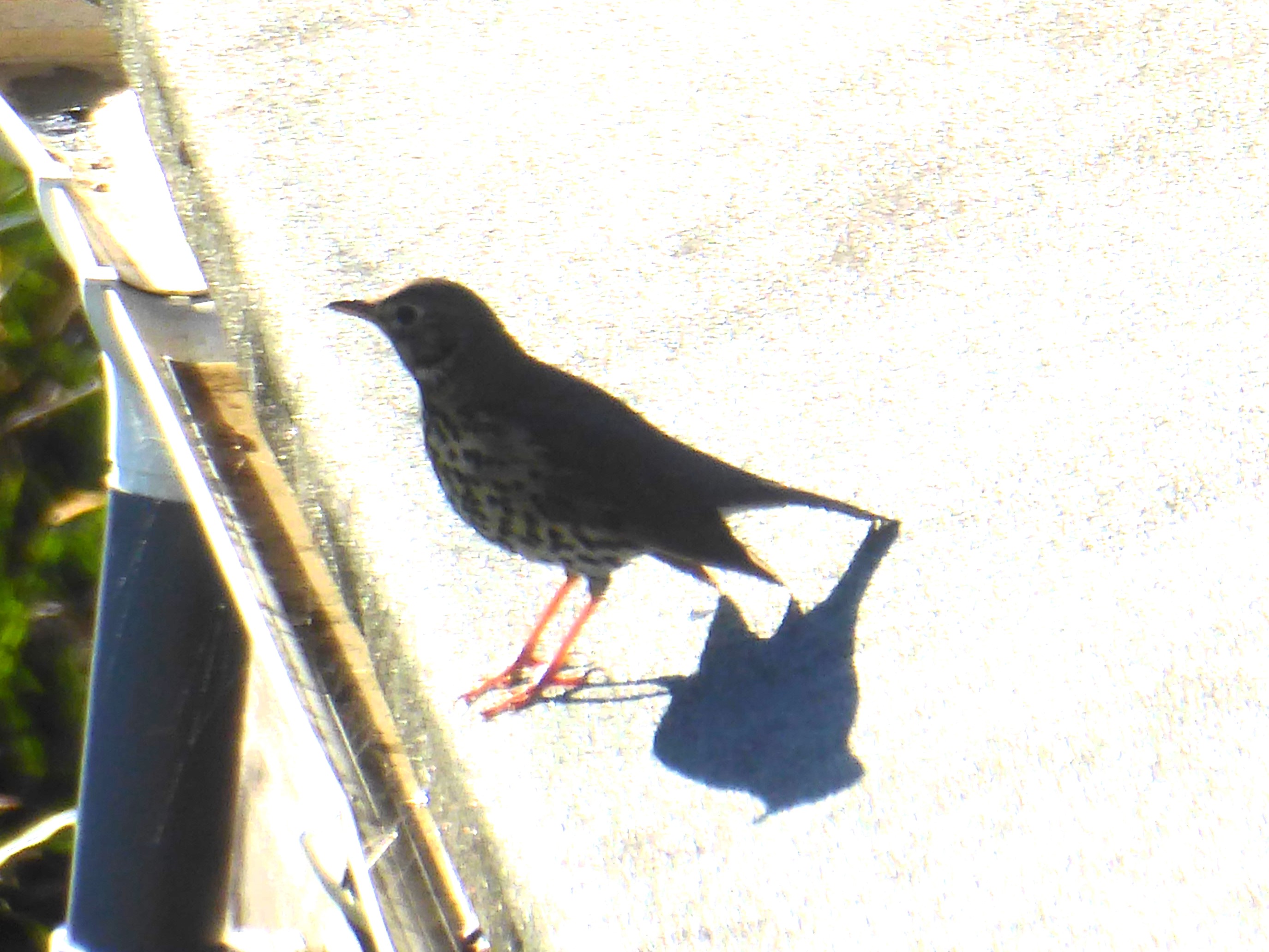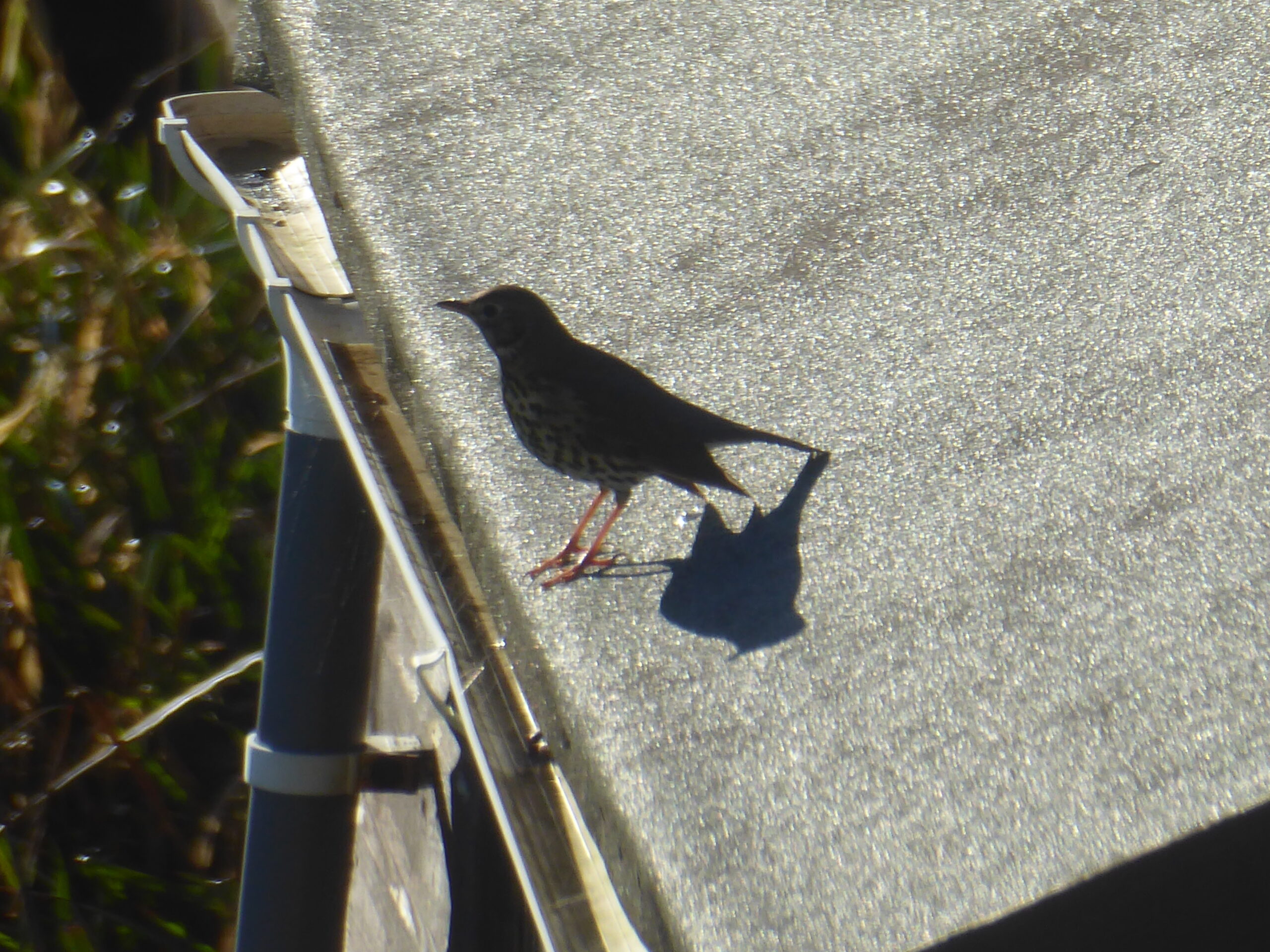Friday was a good day with herons and sunshine. I also managed to get a photo of a mistle thrush. It came to land on our shed roof and at first I thought it was the female blackbird, but then I saw spots! I noticed it again this morning on next door’s lawn which gave me a chance to see it hopping around.
There are two main types of thrush, given that it’s unlikely that the winter migrants – the fieldfare and redwing – would be spotted this far south.
That leaves us with the Song Thrush and Mistle Thrush. This is why I think it’s a mistle thrush:
- I originally assumed it was a blackbird, which is around the size of a mistle thrush. The song thrush is slightly smaller.
- The c-shaped markings on the side of its neck are more pronounced on a mistle thrush, together with a slightly pale cheek patch.
- The spots on its breast are rounder and more club-shaped than the angular arrow-head spots on a song thrush.
- The spots are also more random on a mistle thrush and tend to join up at the flanks to form dark patches. On the song thrush they are arranged in roughly vertical lines.
- The mistle thrush has a more upright stance than the lower crouching song thrush. When it was standing on the sloping shed roof, it was more difficult to tell. But on the next door’s lawn, I could see that it was tall and lean-looking.
- Also, in flight the mistle thrush has white underwings and tail edging, whereas the song thrush has a slightly orange tint under its wings (not like the red flash of the redwing though) and a shorter dark tail. Here’s an edited version of the above photograph, which is a bit clearer:

In the garden today, I’m still watching the plants in the mud to see if they flower or grow a bit more so that I can properly identify them. So far, they are not doing anything much. The cyclamen-type plant is still not flowering and is getting buried under mulchy grass. I noticed bees flying around today, both large fluffy ones and smaller ones (not close enough to identify).
Out of the kitchen window, I saw a large bird of prey flying up over the house; the kestrel perching on the power line; magpies and crows over on the hillside; and seagulls flying up the valley in groups and singly. The valley is a busy corridor for birds, especially gulls and it appears that they are using it all day long, not just at the morning and evening rush hours. I saw a great thrashing and splashing in the stream and got quite excited, but it was only Mr Mallard, who had to rest on the bank for half an hour afterwards.
